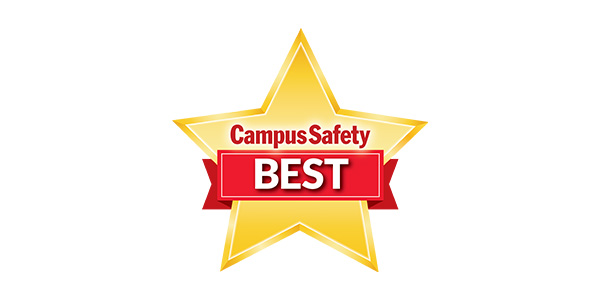As students get back into the groove of the school year, their safety — and the safety of teachers, faculty, and staff — has become more critical than ever. This is further compounded by school districts grappling with budget constraints and staffing shortages. Amid rising concerns surrounding school-related violence like shootings, bullying, and other threats, artificial intelligence (AI) is emerging as a powerful tool to support schools in real-time monitoring and response.
Education-related AI — including school security use cases — is expected to become a $6 billion market by 2025, driven by its capacity to augment overwhelmed staff and offer heightened situational awareness. While promising, AI deployments in school settings also raise important questions regarding privacy, ethics, and the balance between safety and student rights.
AI’s Expanding Role in School Security
AI technology is playing an increasingly significant role in mitigating security risks in schools. From video surveillance systems powered by machine learning to facial recognition and predictive analytics, these tools allow schools to monitor campuses more effectively than with human staff alone.
One of the key areas where AI is making a difference is in the early detection of threats. AI-driven systems can analyze surveillance footage and detect suspicious behaviors, such as individuals loitering near entrances or students showing signs of distress. These systems, equipped with pattern recognition, can alert school administrators and law enforcement in real-time, allowing for quicker intervention before an incident escalates.
RELATED ARTICLE: Leveraging AI for Active Shooter Prevention and Response
For example, AI can assist in identifying potential intruders or unauthorized persons on school premises. By integrating with cameras, AI algorithms can detect unusual movement or behavior patterns — as well as license plates that may not be allowed on school property — to send instant alerts to school security staff, even when human eyes might miss the warning signs. There are even technology options on the market that can be plugged into existing infrastructure, minimizing both overhead costs and time to deploy.
Another critical use case for AI is monitoring social media for potential threats. AI can scan online activity for keywords and patterns that suggest an impending security incident, such as threats of violence or plans for disruptive actions. When flagged, these alerts can be forwarded to relevant authorities, ensuring early interventions.
Addressing School Staffing Shortages with AI
Many school districts are facing a shortage of security personnel due to budget constraints or hiring challenges. AI-powered systems can help bridge this gap by automating many time-consuming monitoring tasks that traditionally require human labor. This includes sifting through hours of surveillance footage, reviewing online content, and tracking student movements on campus. By taking over these functions, AI can allow existing security staff to focus on higher-priority tasks and respond more effectively to actual incidents.
Worse yet, budget constraints mean that a good portion of schools across the U.S. do not have dedicated security personnel, meaning teachers and staff are the acting “security” on campus. In these scenarios, automation is crucial to addressing threats promptly and allows teachers to direct their full attention to what matters most: educating.
AI solutions bring 24/7 surveillance capabilities to schools without requiring round-the-clock staffing. As a result, districts that might otherwise be unable to afford full-time security can still maintain a continuous watch over campuses, providing peace of mind to administrators, teachers, and parents at all hours.
The Implications of AI in Schools
While AI offers significant potential benefits for school security, its deployment also raises several concerns. The use of surveillance technologies, particularly facial recognition and behavior analytics, raises privacy issues for students and staff.
Schools are entrusted with sensitive personal data, and AI systems increase the risk of breaches if not properly safeguarded. Additionally, overreliance on AI for monitoring can create ethical dilemmas, such as the potential for bias in facial recognition systems, which have been shown to misidentify individuals from minority groups at higher rates. Careful oversight, transparency, and appropriate safeguards are essential to ensuring that AI is used responsibly in schools, enhancing security while preserving the rights and well-being of students.
RELATED ARTICLE: How Is Your Organization Protecting Video Privacy?
It’s also critical that everyone — from students and parents to teachers and faculty members — are educated early and often on how the technology works and its purpose in order to mitigate fears and concerns. Striking the right balance between enhancing safety and maintaining a nurturing, trusting educational environment will be a key challenge for school districts deploying AI solutions.
The Future of School Security
AI is already proving to be a game-changer for school security, offering understaffed and overwhelmed districts a valuable tool to enhance student safety. With its ability to monitor campuses, scan for digital warnings of violence, and detect threats in real-time, AI can fill critical gaps in school security operations to create safer learning environments across the globe.
David Ly is the founder and CEO of Iveda, a cloud-based video AI surveillance technology provider.
Note: The views expressed by guest bloggers and contributors are those of the authors and do not necessarily represent the views of, and should not be attributed to, Campus Safety.







